Seasonal Update
While constant rain during September and October is working well for grain fill, it is a headache for cereal hay growers. Once oaten hay crops reach growth stage 71, when the head has emerged from the flag leaf and the grain is watery ripe, quality can deteriorate. Researchers have found that in the week after reaching GS71 typical neutral detergent fibre levels increase six percentage points and water-soluble carbohydrate levels fall 10 percentage points.
Goulburn Murray Valley region received 20-25mm of rainfall this week, this was ideal for crops, which are doing well in the region.
South West Victoria received 50mm of rainfall this week, as growers report some of the wettest conditions all year. Silage production is up on previous years.
South East SA received 20mm of rain this week. This rain has been timely for the area and helped drive a good spring. Crops in the region continue to do well.
The Brunswick area received 30mm of timely rain this week. Across the Wheat Belt conditions have become dry. Growers made the decision to cut even though it was still early.
Figure 1: Last Weeks Rainfall
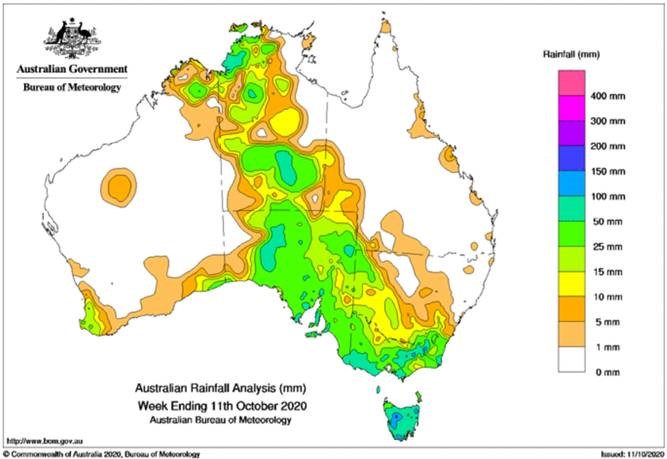
Figure 2: BoM 8-Day Rainfall Forecast
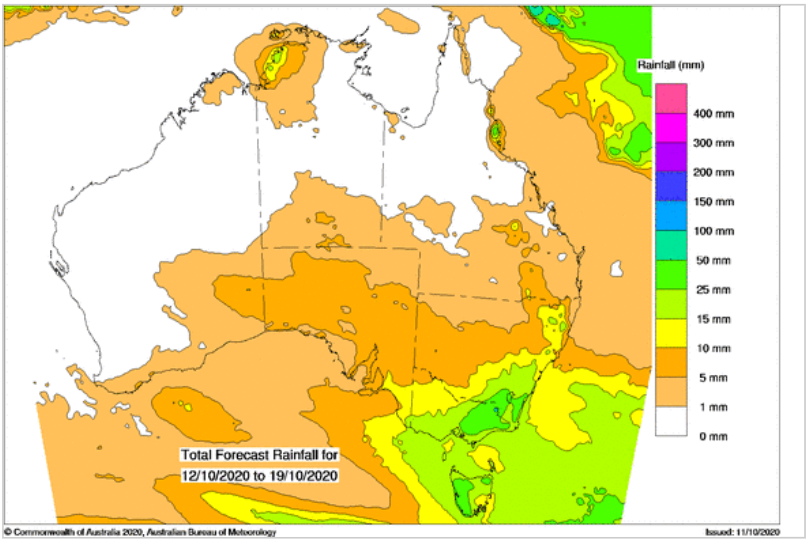
Figure 3: BOM-Australian Landscape Water Balance
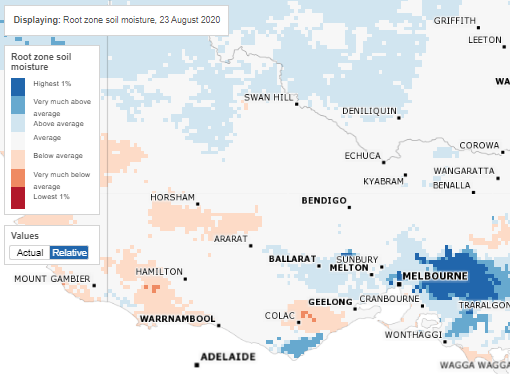
Figure 4: Precipitation Outlook
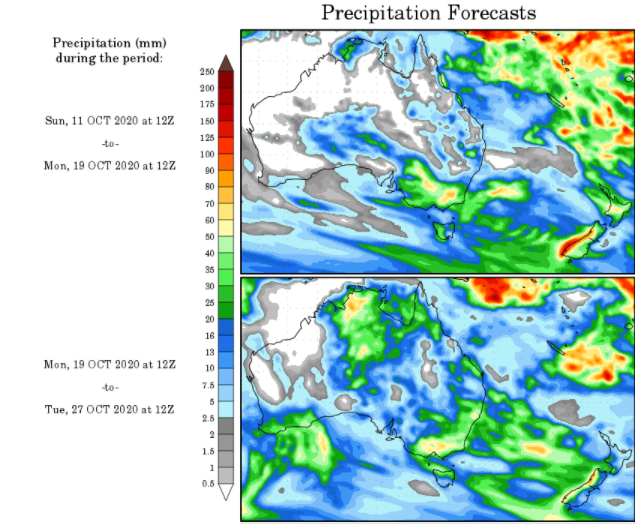
Trading and Marketing
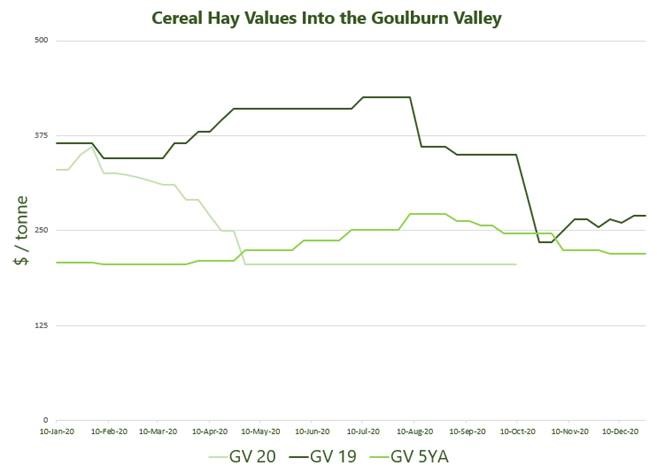
Victoria
Goulburn Murray Valley advanced crops have been made into silage, hay will start to be cut in the next ten days depending on the weather.
Vetch continues to the cut in the Mallee, as well as cereal hay. We will likely see some weather-damaged hay in the Mallee, however, this will vary. Enquiries are starting to come through for new season vetch and cereal hay.
Dairy farmers in Gippsland and southwest Victoria are reportedly keen to secure good-quality new-season vetch and cereal hay. They are looking to contractors and traders to source good product and terms for the next twelve months.
|
Change |
per t |
|
| Cereal hay |
+/- $0 |
$190-220 |
Steady |
| Lucerne hay |
+/- $0 |
$450-500 |
Steady |
| Straw |
+/- $0 |
$70-100 |
Steady |
| Pasture hay |
+/- $0 |
$250-330 |
Steady |
Western Australia
According to WA exporters, 90 per cent of the state’s hay has been cut, and the hay baled so far is expected to be graded in the top two of the nine-grade quality profile.
Growers in the Margert River area continue to make silage, pasture hay is still three weeks off being ready. Conditions are varied and this is resulting in big difference in yields from one property to the next.
Predicted average for cereal hay across the southwest at this stage looks to be 4.5/tonne. Hay plantings are significantly up this year.
|
Change |
per t |
|
| Cereal hay |
+/- $0 |
$330-370 |
Steady |
| Lucerne hay |
+/- $0 |
$450-490 |
Steady |
| Straw |
+/- $0 |
$120-140 |
Steady |
| Pasture hay |
+/- $0 |
$200-220 |
Steady |
South Australia
The Bordertown region is still three to four weeks off cutting hay. Further north some earlier crops have now been cut. Growers will hold off cutting as long as they can to try and avoid rain which continues to pass through the area.
Curing could be an issue and has already been reported an issue in parts of central South Australia. Buyers remain conservative at this stage, with demand not yet spiking.
|
Change |
per t |
|
| Cereal hay |
+/- $0 |
$220-250 |
Steady |
| Lucerne hay |
+/- $0 |
$330-350 |
Steady |
| Straw |
+/- $0 |
$100-120 |
Steady |
| Pasture hay |
+/- $0 |
$180-200 |
Steady |
Pictures of 20/21 Season Crops
Hay: Oaten Hay JC-1 (Oaten Hay SP), Yallara Variety
Specifications: Feels soft, minimal weather spots or stains, fresh & sweet aroma, >1% Rye Grass, JC-1 Super colour (95% Green) and JC-1 stem size (<5mm), Water Soluble Carbohydrates 25.5%.
Estimated yield of 7.5mt/ha, soil moisture is good, seeding date 7/4/2020, cutting date 25/09/2020, baling date 5/10/2020. Inspected 6/10/2020.
Location: Thule, New South Wales
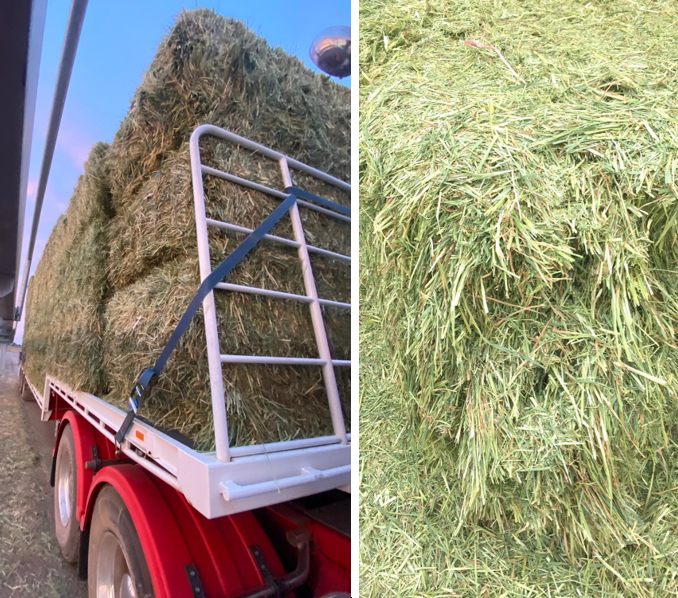
Sources: Bureau of Meteorology, Dairy Australia, WX Maps, Lachstock Research, Weekly Times, Grain Central, Mecardo Expert Market Analysis, AFIA (Australian Fodder Industry Association) & Feed Central.
By Katie Lindkvist, Wingara AG. |
|






